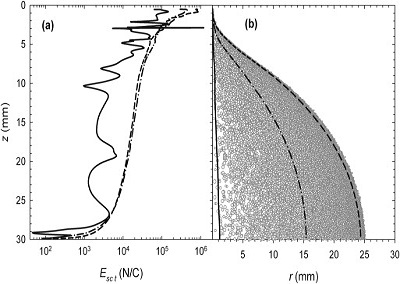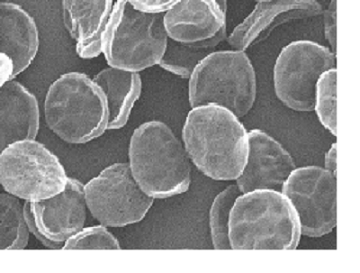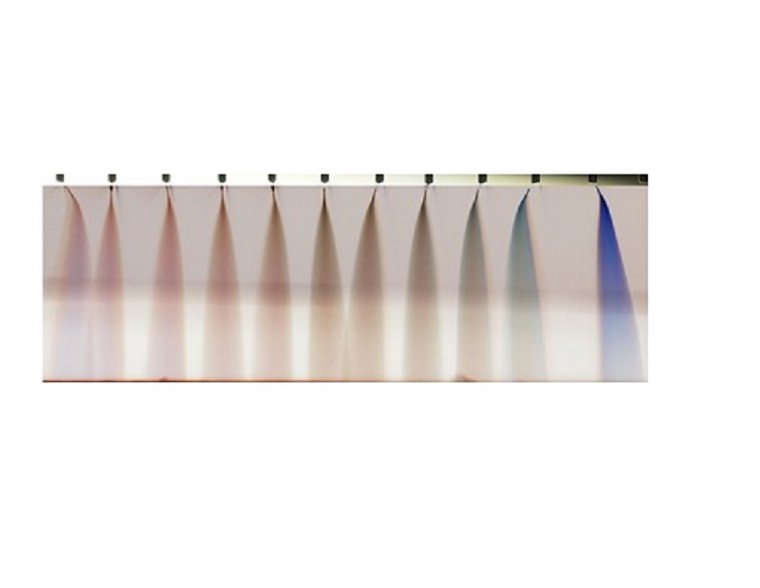Electrospray aka Electrohydrodynamic atomization (EHDA) is a facile method that uses electrostatics for dispersing liquids as charged micro- and nano-sized droplets with nearly identical sizes.
-

Numerical Simulations
Electrosprays typically comprise thousands of electrostatically interacting droplets, becoming difficult to simulate. For N droplets, about N×N interactions must be computed at each time step. We have developed codes that can simplify these computations without loss of predictive power. We have used such strategies for simulating evaporating electrosprays, with Coulombic fission events, and even charge neutralization by gas phase ions (see Electrospray Neutralization below).
-

Electrospray deposition
When condensable solutions (e.g., polymer solutions) are electrosprayed toward a plate, particulate films can be made on it. The arrangement of the particles is of great practical importance. For instance, fractal structures can help transport chemicals to more reaction sites. The film structure depends on many electrospraying factors, and charge transport within the film.
-

Multiplexing of electrospray systems
Scaling up the electrospray and electrospinning processes is still an exciting challenge in the field, where the quest for robust strategies continues. Creating matrices of emitters capable of stable, continuous operation is challenging due to the electrostatic shielding between the emitters and consequent weakening of the electric field. We have demonstrated indefinitely-scalable linear matrices, both by computations and by experiments. Such arrays can be used for making droplets, nanoparticles, coatings, or printed patterns.
